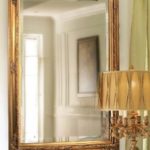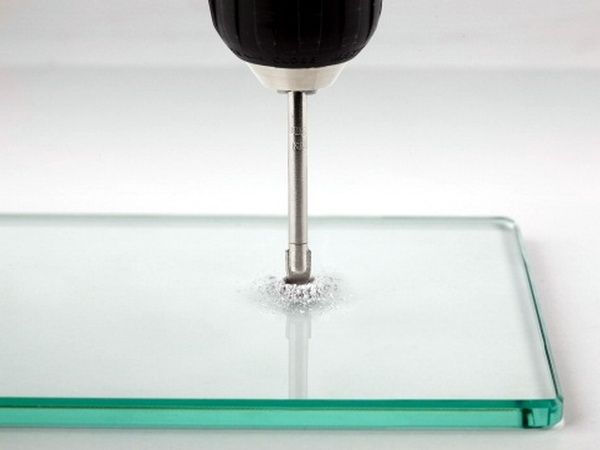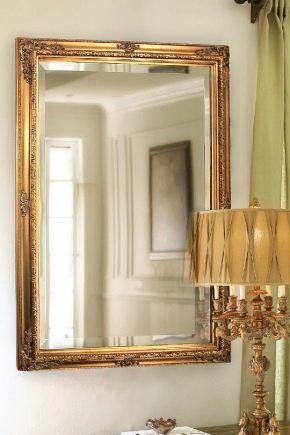How to make a mirror
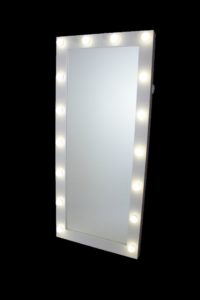 A mirror is such a common and sought-after item in any home, store, or sanitary area that it is difficult to imagine your life without it. Pocket and full-length, utilitarian rear-view mirrors in a car or as part of the interior - they make our life more informative, safe, and interesting.
A mirror is such a common and sought-after item in any home, store, or sanitary area that it is difficult to imagine your life without it. Pocket and full-length, utilitarian rear-view mirrors in a car or as part of the interior - they make our life more informative, safe, and interesting.
The content of the article
Where did the mirror come from?
Thanks to the mirror, a person can receive information about his own appearance, analyze his appearance and the state of the environment. But in ancient times, a person’s only source of information about his appearance was the clear waters of a stream, where he could observe his own reflection for the first time.
The mirror is a simple glass of varying degrees of purity, connected to a reflective sprayed layer - amalgam. Their production in today's form began not so long ago. In ancient times, people used polished metal plates (copper, tin, bronze, platinum, even gold, steel), polished gems and semi-precious stones if they had a high degree of reflectivity. It was only after the Industrial Revolution that glass-based glass with a reflective coating was produced. And since then, the principle of receiving has remained virtually unchanged.
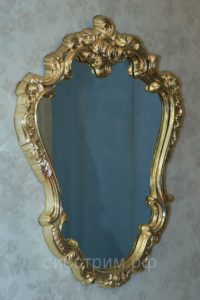 Reflective surfaces are found in the ruins of ancient palaces, in the sarcophagi of kings and rich nobility. This item was often decorated very intricately; mirrors had ivory handles and were framed with precious stones and pearls. Many fairy tales and legends are associated with the mirror and its unusual properties; there are many rumors about how it is used in magical rituals. After all, this object, reflecting the second reality, for many people was a symbol of entry into the other world.
Reflective surfaces are found in the ruins of ancient palaces, in the sarcophagi of kings and rich nobility. This item was often decorated very intricately; mirrors had ivory handles and were framed with precious stones and pearls. Many fairy tales and legends are associated with the mirror and its unusual properties; there are many rumors about how it is used in magical rituals. After all, this object, reflecting the second reality, for many people was a symbol of entry into the other world.
REFERENCE! The appearance of doubles, evil spirits and various mystical events were often associated with the mirror surface.
What types of mirrors are there?
How are mirrors different? First of all, when choosing, we pay attention to its shape, size, and the presence of a frame that matches the interior. But these are only external signs that matter to us from the point of view of personal preferences and taste. As for the base itself, it is almost the same. The only difference is in the type of cutting and design. By and large, today we can distinguish two main production technologies:
- from ordinary glass;
- based on silver.
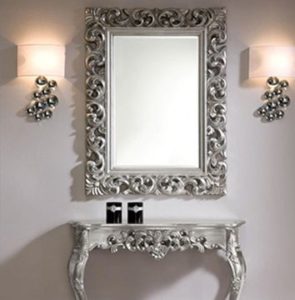 In the first case, they take polished glass of the desired format, process the edges, make holes as necessary, and wash them with solutions until they are as clean as possible. Then they spray aluminum, iron alloys with titanium, chromium and other metals. Then a coating of paints and varnishes is applied. This method is considered outdated and is very cheap, but the production of such mirrors is only possible in small sizes.
In the first case, they take polished glass of the desired format, process the edges, make holes as necessary, and wash them with solutions until they are as clean as possible. Then they spray aluminum, iron alloys with titanium, chromium and other metals. Then a coating of paints and varnishes is applied. This method is considered outdated and is very cheap, but the production of such mirrors is only possible in small sizes.
A more modern approach is the use of a silver solution. A copper layer and adhesive chemicals are applied to the glass and varnished twice.This method allows you to obtain mirrors of almost any size, the quality will be increased, and moisture resistance will be maximum.
What are mirrors made of?
Today, a mirror is produced by combining two parts - ground glass and amalgam. Most often, glass is produced at a mirror factory in accordance with all requirements; for this, the factory, as a rule, has all the necessary materials and components. Or the glass is made elsewhere to order from mirror makers. An important difference between such glass is its high degree of purification; it should not contain impurities, because any foreign particles affect the quality of reflection.
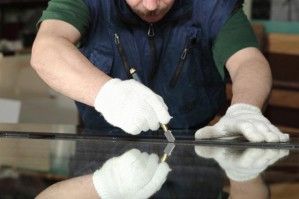 Glass raw materials are thoroughly cleaned in several stages and sent for remelting. Minerals and their products are used as components:
Glass raw materials are thoroughly cleaned in several stages and sent for remelting. Minerals and their products are used as components:
- sand quartz;
- dolomite, feldspar;
- soda and its compounds;
- existing broken glass (good quality waste);
- coal.
In addition to glass, it is necessary to make a composition for the reflective surface. Silver oxide is usually used for this. Typically, silver darkens when combined with oxygen, but factory technologies make it possible to preserve its original whiteness. The result is a silver reflective surface.
Manufacturing technology
The basis for the mirror, as mentioned above, is always transparent glass of increased purity and as smooth as possible. The components for its production are mixed as much as possible, and as a result, a special glass powder is obtained - a charge. The mass enters through a conveyor into a melting furnace, where it is melted into a homogeneous liquid glass mass. To harden, it is baked in an oven at 1500 C. As a result, an absolutely smooth surface of the canvas is obtained with a thickness of only 4 mm and a width of 3-4 m.
 The material is sent for cutting after cooling. Then the glass is checked for defects, and selected sheets are sent to the metal deposition shop.
The material is sent for cutting after cooling. Then the glass is checked for defects, and selected sheets are sent to the metal deposition shop.
IMPORTANT! Defective material cannot be used for mirrors; it is recycled.
The reflective layer is created by applying a chemical solution to the surface using a special technology. The main task is to achieve the most even, smooth surface, bubbles and any inclusions are excluded. To do this, the glass is polished with brushes, washed, dried, and chemical compounds are applied with a spray bottle. The process of oxidation of aldehydes through contact with ammoniacal silver compounds takes only 20 seconds. At the end of the chemical reaction, the solution is dried. As a result, a reflective surface appears on one side of the glass.
The finished mirror is carefully checked by inspectors for defects. To protect the fragile reflective layer, paint of a dark green, grayish hue is applied to it. Then the canvas is dried again and checked for chips, cracks, scratches, and any defects. If the quality is met, the goods are sent to the customer, to stores, to warehouses.
Interesting facts about mirrors
The first mirror of a modern type was obtained in the 13th century in a Franciscan monastery. This was the result of long-term chemical experiments by the monk Pekham, who studied the properties of metals and glass. One day he coated the glass with a layer of tin and thus obtained the prototype of today's mirror.
The mirror is often used in psychological experiments. For example, it has been revealed that not all people recognize their reflection - this is a symptom of certain mental disorders.It has also been noted that not all animals can relate themselves to the reflection in the mirror - elephants recognize themselves by their movements and try to check their guess, and gorillas understand that in front of them they are themselves, trying to erase the marks on their bodies, specially placed by scientists, because for For gorillas, status in the pack and visual contact are very important.
 The results of observations of patients without limbs are interesting. This is where the effect of brain plasticity comes into play - people mistakenly see phantom limbs and begin to feel them if they place the mirror in the right way, reflecting the existing arm or leg in it.
The results of observations of patients without limbs are interesting. This is where the effect of brain plasticity comes into play - people mistakenly see phantom limbs and begin to feel them if they place the mirror in the right way, reflecting the existing arm or leg in it.
A mirror is also used in science for a variety of purposes. Today, the phenomenon of time travel is being actively studied, which requires the formation of interdimensional tunnels, which science fiction writers so often dream about.
REFERENCE! Scientists have discovered the so-called Casimir effect - a type of physical force that appears in a quantum field between two mirrors placed opposite under conditions of electrical voltage in a vacuum.
The distance between the mirrors (or metal plates) should be several micrometers. Theoretically, under these conditions, a “wormhole” could appear, with the help of which there is a possibility of exceeding the speed of light.


